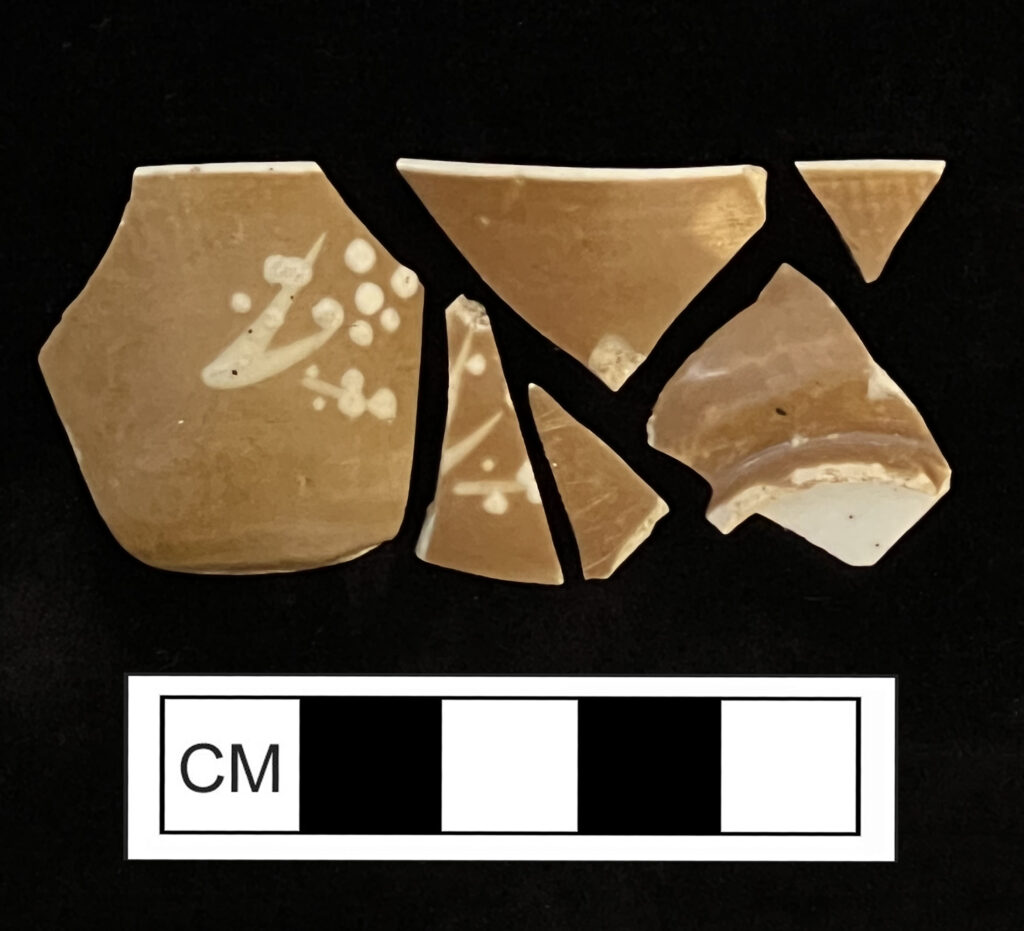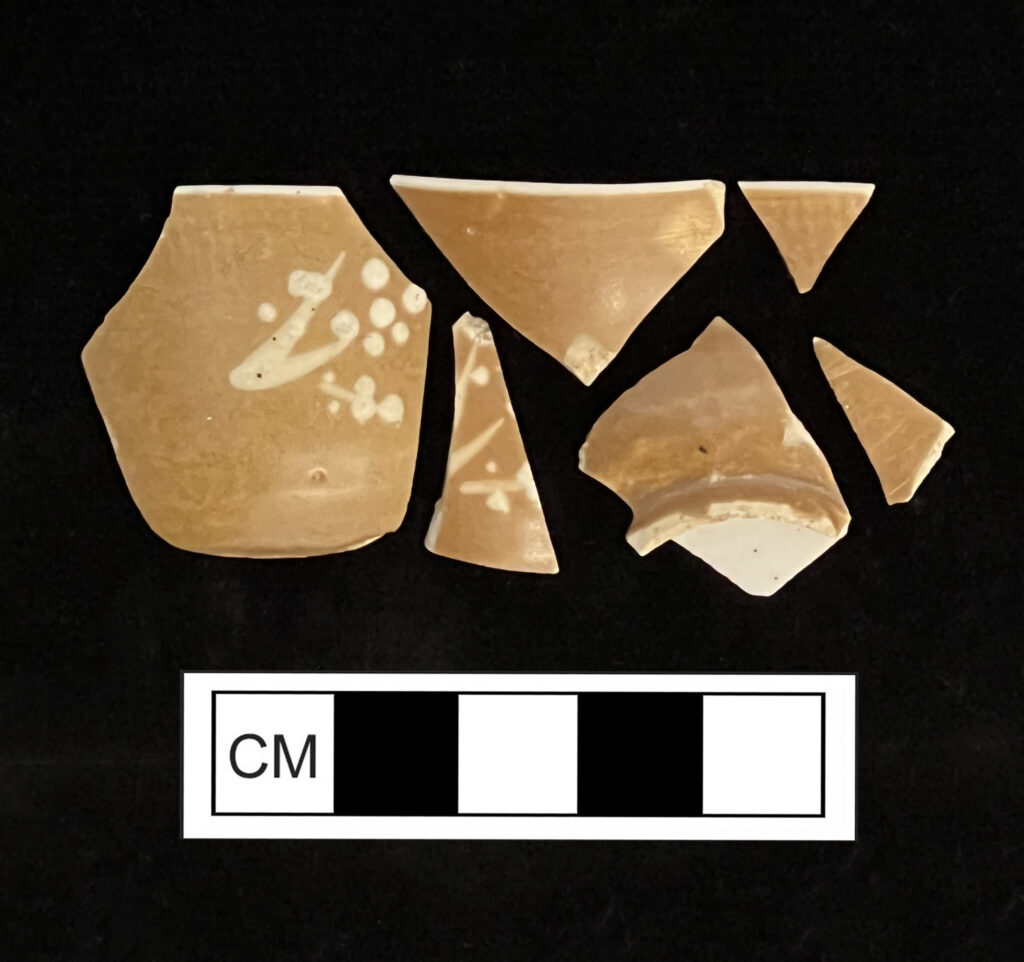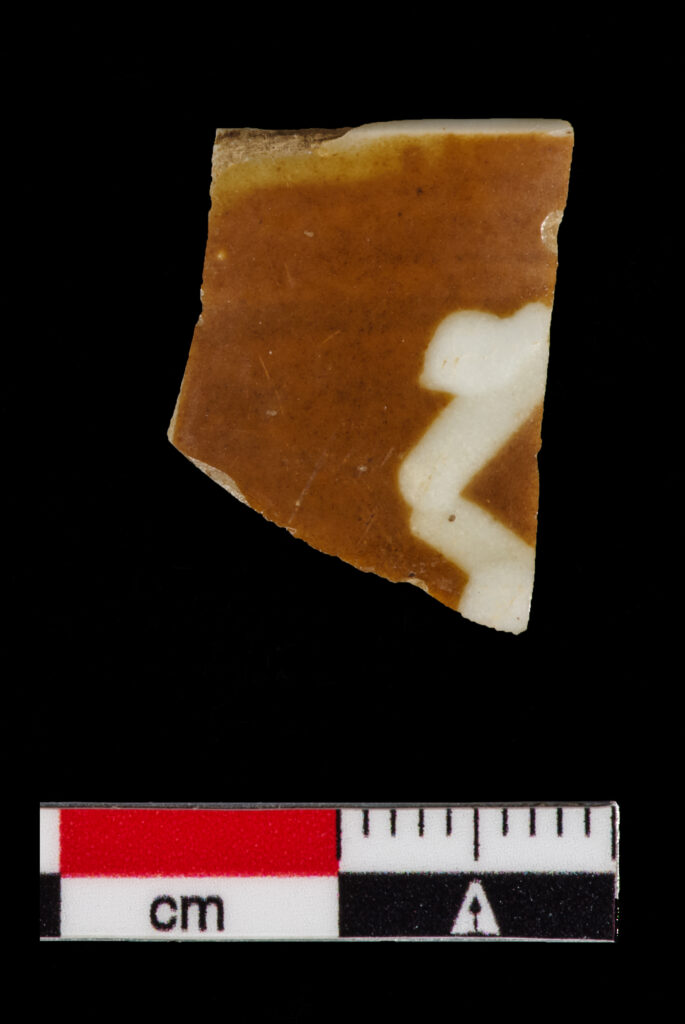Beth Bollwerk, Project Manager for the Digital Archaeological Archive of Comparative Slavery (DAACS)
Welcome back to COVA’s Curio Corner – a quarterly feature where we highlight a particularly interesting artifact, or artifact type, from an archaeological project in Virginia. This Corner’s artifact – a Chinese Porcelain wine cup that dates to the first half of the 17th century – comes from the Digital Archaeological Archive of Comparative Slavery’s (DAACS, www.daacs.org) ongoing project funded by the National Endowment for the Humanities, “The Origins of Slave Society: Digitizing Flowerdew Hundred”. DAACS is a web-based initiative designed to foster inter-site, comparative archaeological research on slavery throughout the Chesapeake, the Carolinas, and the Caribbean. Our goal is to help scholars from different disciplines use archaeological evidence to advance our historical understanding of the slave-based society that evolved in the Atlantic World during the colonial and ante-bellum periods. For more details about the grant see: https://www.monticello.org/press/news-releases/neh-awards-monticello-two-new-grants-nearly-1-million-within-a-year/



This wine cup, fragments of which are shown here, was excavated from the Fortified Compound at Flowerdew Hundred (44PG65). Historic documents suggest George Yeardley, the owner of Flowerdew Hundred, who served as the colonial governor of Virginia and was one of the first enslavers in British North America, had the fortification constructed during the first quarter of the 17th century primarily as defense against Spanish or Native incursions. However, the sheer diversity of artifact types found within the fortified compound suggests that during its occupation in the first and second quarter of the 17th century it served multiple roles, from a military compound and slave quarter to housing for elite Englishmen. Late Medieval plate armor, lead shot, matchlock gun parts, sword parts, and cannon balls are intermingled with expensive, high style imported ceramics, copper alloy adornment items, glass beads, and tobacco pipes. Future DAACS analyses will examine what the distribution of these different artifact types on the site can tell us about its inhabitants, including some of the first Africans who were enslaved in North America.
Seventeenth century wine cups were miniature, delicate drinking vessels. Cousins to the small but thicker Japanese Sake cup, some wine cups had a sinuous bell shape with a prominently flared rim. Others, like the one from Flowerdew, were nearly straight sided. Wine cups were a more costly, and showy, way for elites to drink distilled spirits during the Colonial Period in Europe and the British Atlantic. Made of Chinese Porcelain, these cups were delicate and so thin bodied that the porcelain is translucent even through the unusual toffee brown glaze and white slip floral decoration. The slipped decoration is a prunus branch, symbolizing the Daoist ideas of winter, longevity, beauty, and purity [1]. The cup from Flowerdew Hundred’s Fortified Compound was produced in Jingdezhen, a city in the Jiangzi province that is well-known for producing blue and white kraak porcelain for export during the first decades of the 17th century. The slip decoration was introduced during the reign of the Emporer Wanli (r. 1562-1620).
More than a dozen whole or partial examples of costly Chinese Porcelain hand painted blue wine cups have been recovered from sites occupied by the English in the early 17th century along the James River [2]. However, there are only two known examples of wine cups from Virginia sites that exhibit the brown and white slip decoration – the six sherds from Flowerdew and a single sherd from Jamestown (also pictured here). If you’d like to learn more keep an eye out for a forthcoming publication by our colleague Merry Outlaw, Senior Curator at Jamestown Rediscovery, that reviews the history of 17th century Chinese Porcelain objects excavated from Jamestown and other sites occupied in the early Colonial Period in Virginia, including Flowerdew — Following the Dragon: Late Ming Porcelain from the 1607 to ca.1624 James Fort, Jamestown, Virginia.
Bibliography
[1] Outlaw, Merry 2023 Personal Communication. [2] Straube, Bly 2001 European Ceramics in the New World: The Jamestown Example. Ceramics in America, edited by Robert Hunter. https://chipstone.org/issue.php/2/Ceramics-in-America-2001